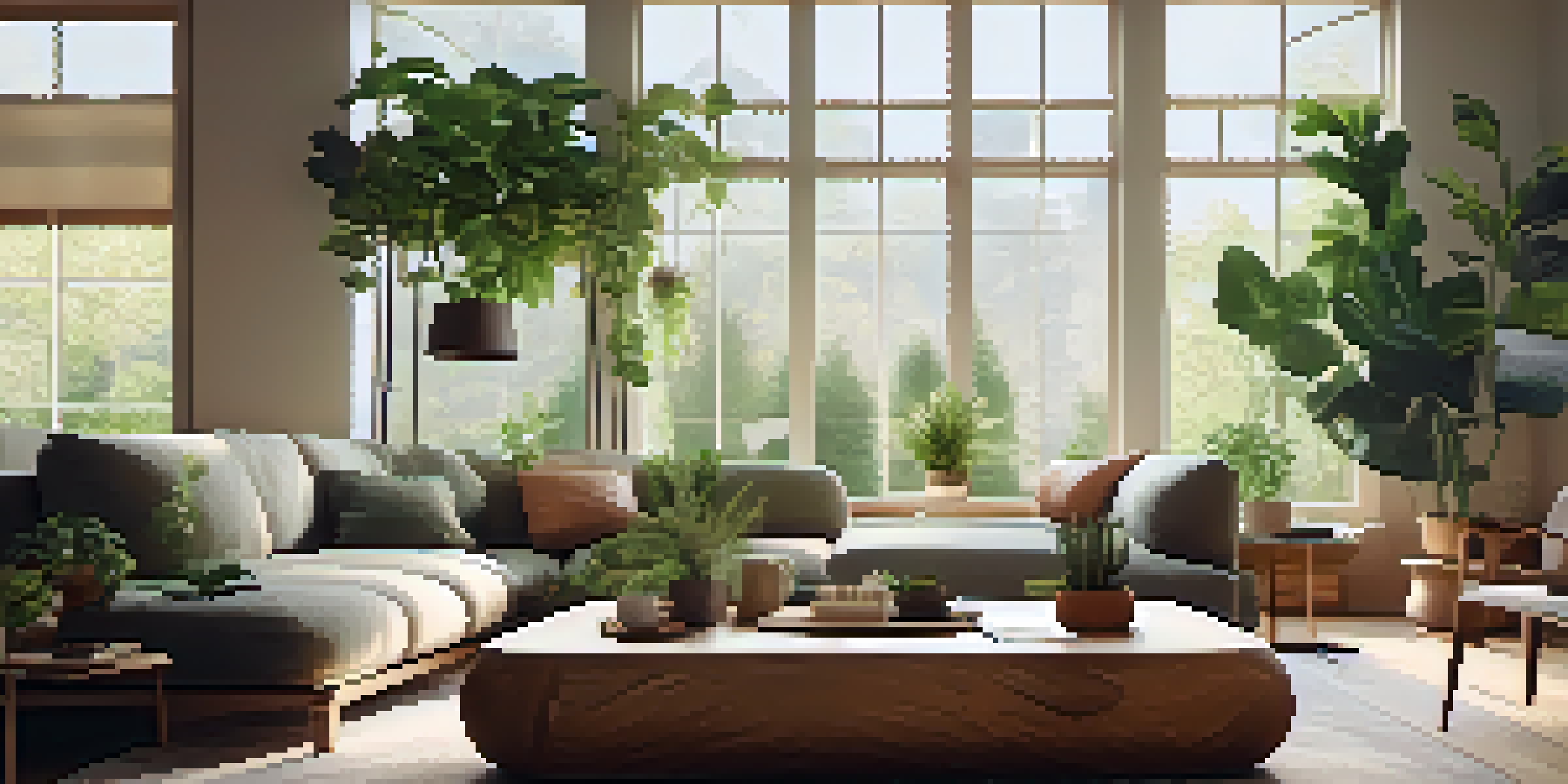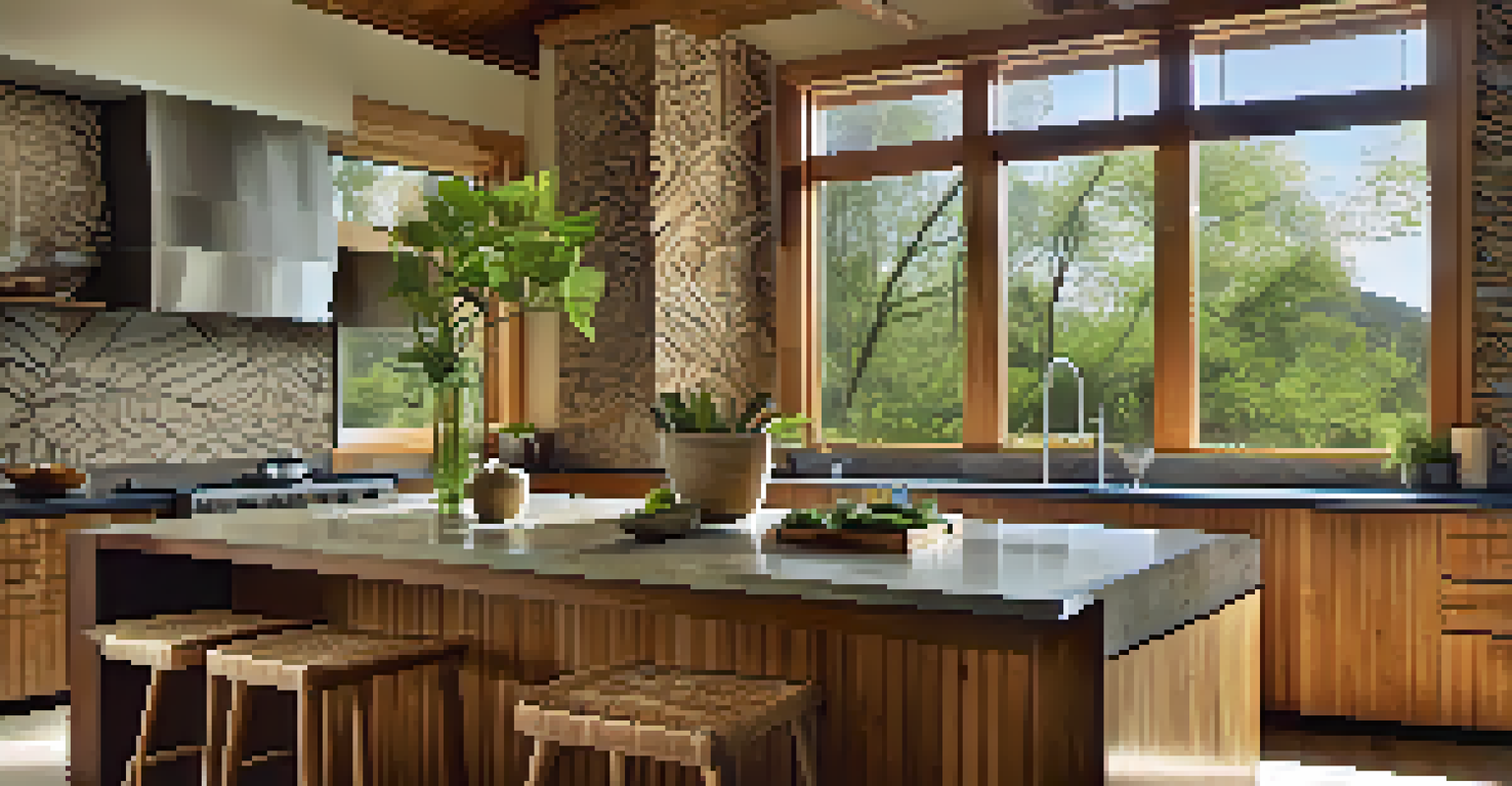Timeless Design Elements Inspired by Nature's Beauty

The Power of Organic Shapes in Design
Organic shapes mimic the curves and forms found in nature, creating a sense of harmony. Think about how a flowing river or the soft petals of a flower evoke feelings of calm and comfort. Designers often incorporate these natural forms to create spaces that feel inviting and alive.
The best designer is the one who can imagine the life of the people who will use the product.
For instance, furniture with rounded edges can soften a room, making it more approachable. This approach not only enhances aesthetic appeal but also fosters a more relaxed atmosphere. By embracing organic shapes, we invite nature's tranquility into our everyday environments.
Furthermore, these shapes can be versatile, fitting into various design styles from modern to rustic. They challenge the rigidity of traditional geometric designs, allowing for creativity and uniqueness. In essence, organic shapes remind us that beauty often lies in nature’s imperfections.
Color Palettes Inspired by Natural Landscapes
Nature offers a stunning array of colors, from lush greens of a forest to the warm hues of a sunset. These colors can evoke emotions and set the tone for any design project. By drawing inspiration from these landscapes, designers create atmospheres that resonate with our innate connection to the environment.

For example, a palette featuring earthy tones can create a grounding effect in a space, promoting relaxation and peace. Incorporating these colors into interior design can transform a sterile room into a warm and welcoming haven. It’s about using nature’s hues to reflect the beauty we experience outdoors.
Embrace Nature's Organic Shapes
Incorporating organic shapes in design creates inviting and harmonious spaces that reflect the beauty of nature.
Moreover, seasonal changes provide endless inspiration for color schemes. Designers can adapt their palettes to reflect the vibrant blooms of spring or the muted tones of winter. This dynamic approach not only keeps designs fresh but also allows for a deeper connection to the world around us.
Textures That Bring the Outdoors In
Textures play a crucial role in design, adding depth and tactile experiences to a space. Nature is filled with rich textures, from rough bark to smooth pebbles, which can be replicated through various materials. Incorporating these natural textures can enhance the sensory experience of a space.
Design is not just what it looks like and feels like. Design is how it works.
For instance, using reclaimed wood for furniture adds a rustic charm while reminding us of the beauty of aged trees. Similarly, stone accents can create a serene and grounding effect, reminiscent of a peaceful mountain landscape. By blending these elements, designers can create environments that feel both familiar and inspiring.
Additionally, textures can evoke memories and emotions associated with nature. A soft, plush fabric can remind us of a cozy blanket on a chilly day. When thoughtfully integrated, these textures not only beautify a space but also foster a deeper emotional connection to our surroundings.
Natural Patterns That Inspire Visual Interest
Patterns found in nature, like the intricate designs of leaves or the rhythmic waves of the ocean, can add visual intrigue to any design. These natural patterns can be translated into textiles, wallpapers, or even architectural features, creating a dynamic visual experience. They remind us of the beauty of the world around us and how it can be reflected in our spaces.
For example, a leaf motif on fabric can bring a touch of the outdoors inside, making a room feel lively and fresh. Similarly, geometric patterns inspired by natural formations can create stunning visuals that draw the eye. By incorporating these patterns, designers can create spaces that feel unique and connected to nature.
Choose Sustainable Materials
Opting for sustainable materials not only reduces environmental impact but also enhances the natural aesthetic of designs.
Moreover, these patterns can also help in establishing a theme or narrative within a space. Whether it’s the calming presence of a floral print or the energetic vibe of a wave pattern, they can influence the mood and functionality of a room. Nature's patterns are a reminder of the intricate beauty that surrounds us.
Sustainable Materials: Nature's Gifts to Design
Sustainable materials are becoming increasingly important in modern design, and nature provides an abundance of them. From bamboo to cork, these materials not only reduce environmental impact but also bring a natural aesthetic to any project. Embracing sustainability is a way for designers to honor the beauty of the planet.
For instance, bamboo is a fast-growing resource that can be used for flooring, furniture, and more. Its natural grain adds warmth and character to spaces while being environmentally friendly. By choosing sustainable materials, designers can create beautiful environments while also making responsible choices.
Furthermore, incorporating recycled materials can add a unique story to a design. Each piece carries its own history, which can enhance the emotional connection people have with their surroundings. In essence, sustainable materials reflect a commitment to preserving nature's beauty for generations to come.
Biophilic Design: Bringing Nature Indoors
Biophilic design focuses on integrating natural elements into our built environments, fostering a connection to nature. This approach can include everything from natural light and plants to water features and natural materials. By embracing biophilic design, we can create spaces that enhance well-being and productivity.
For example, incorporating indoor plants can improve air quality while adding a vibrant touch to interiors. Similarly, large windows that invite natural light can create a warm and uplifting atmosphere. These elements not only beautify a space but also promote a sense of calm and connection to the outdoors.
Biophilic Design Enhances Well-Being
Integrating biophilic design elements fosters a connection to nature, promoting well-being and productivity in various environments.
Additionally, biophilic design can be applied in various settings, from homes to offices, making it incredibly versatile. As we continue to seek balance in our fast-paced lives, integrating nature into our spaces becomes more important than ever. It’s about creating environments that nourish our souls and inspire creativity.
The Emotional Impact of Nature-Inspired Design
Nature-inspired design has a profound emotional impact on our well-being. Surrounding ourselves with elements that reflect nature can evoke feelings of peace, joy, and serenity. This emotional connection is vital in creating spaces where we feel comfortable and relaxed.
For instance, a room filled with natural light and earthy tones can create a soothing environment, making it an ideal space for relaxation. Conversely, spaces that incorporate vibrant colors and dynamic patterns can energize and inspire. Understanding these emotional responses allows designers to craft spaces that truly resonate with individuals.

Moreover, studies have shown that exposure to nature can reduce stress and improve mental health. By integrating nature-inspired design elements, we can create environments that enhance our overall well-being. In a world that often feels disconnected from nature, these design choices serve as a reminder of the beauty and tranquility that the natural world offers.